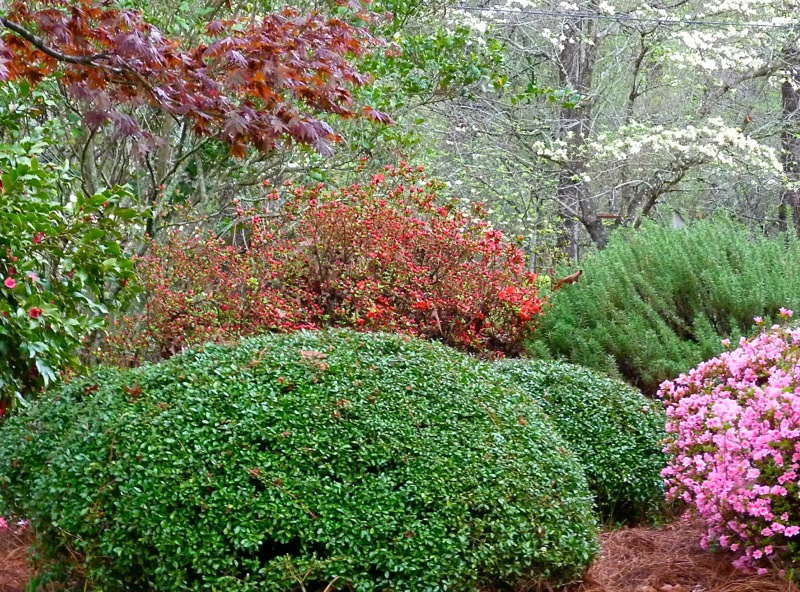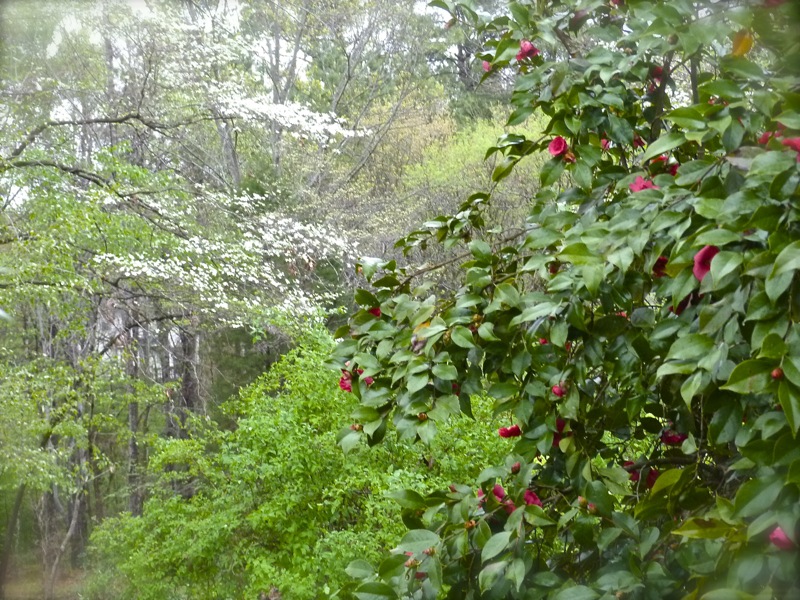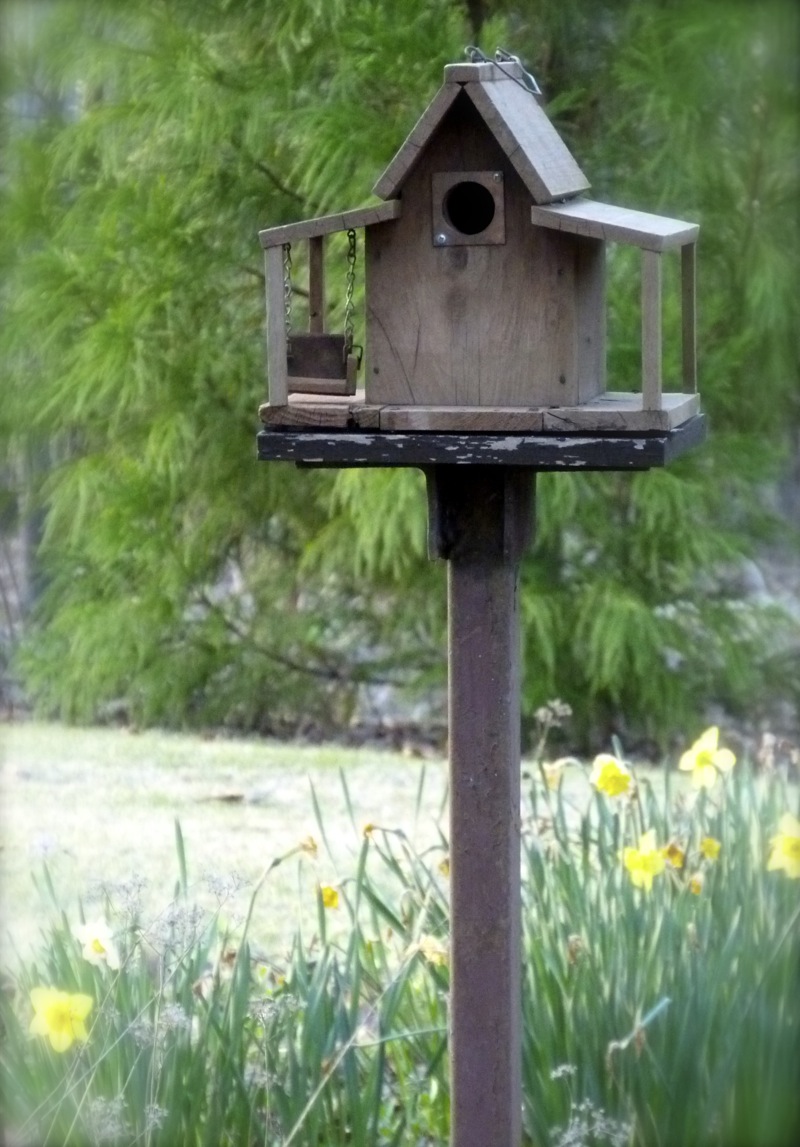Chinese Snowball Viburnum and Other Snowball Bushes
 Sunday, April 13, 2014 at 6:45PM
Sunday, April 13, 2014 at 6:45PM Generations of southerners have welcomed Chinese snowball viburnum, Viburnum macrocephalum 'Sterile', into their gardens. With multitudes of flower clusters up to eight inches across, this classic shrub is a thing of beauty when it blooms.
This semi-evergreen shrub grows in hardiness zones 6-9 in full sun to partial shade, though it may need protection from hot afternoon sun in the most southern regions. My own Chinese snowball viburnum gets full sun until about 2P.M., after which it is in the shade.
Chinese snowball viburnum reaches 12 to 20 feet tall and wide with a dense round form, so it needs to be sited where it will have space to grow. It can be trained as a small tree, and it makes a wonderful specimen. It also fits well into a woodland garden. It blooms on the previous season's old wood, so it should be pruned for shaping soon after it finishes blooming. That is also the best time to fertilize. It likes acidic, loamy soil that is moist but well drained; however, it will adapt to a wide range of soil conditions. It is a low maintenance shrub that is rarely bothered by pests or diseases.
The plant usually blooms from late April through early May, though bloom time is later in more northern regions. The flower clusters start out lime green, then mature to pure white. The flowers are not fragrant, but they do attract butterflies. They are sterile, so there is no danger of invasiveness. As beautiful as the blooms are in the garden, they also make outstanding cut flowers.
There is sometimes confusion about the identity of this shrub. It is often mistaken for hydrangea, for the blooms resemble those of Hydrangea arborescens, also called Annabelle hydrangeas, as well as Hydrangea paniculata, also called PeeGee hydrangeas. Chinese snowball viburnum is a member of the Caprifoliceae family, while hydrangeas are a members of the Hydrangeacea family. Some of the differences:
Chinese snowball viburnum has smaller leaves than hydrangeas.
Chinese snowball viburnum is a larger shrub than Annabelle hydrangea, which only grows 4-6 feet.
Chinese snowball viburnum has round flower clusters, while PeeGee's are cone-shaped.
Chinese snowball viburnum prefers a sunnier location than the hydrangeas and is more drought tolerant.
Chinese snowball viburnum blooms earlier and has a shorter bloom time than the hydrangeas, though sometimes it will have some late summer blooms.
Chinese snowball viburnum blooms on old wood and should be pruned soon after blooming, while Annabelle and PeeGee, which bloom on new wood, are best pruned in late winter or early spring.
Be aware that other shrubs are also called Snowball, including the mophead types of Hydrangea macrophylla, the previously mentioned Hydrangea arborescens and Hydrangea paniculata and also two other types of viburnum: Viburnum opulus, which is also called as European cranberry bush and guelder rose; and Viburnum plicatum, the Japanese snowball.
So when looking for a snowball, remember that not all snowballs are the same. It really helps to know the Latin!
 Permalink
Permalink 








